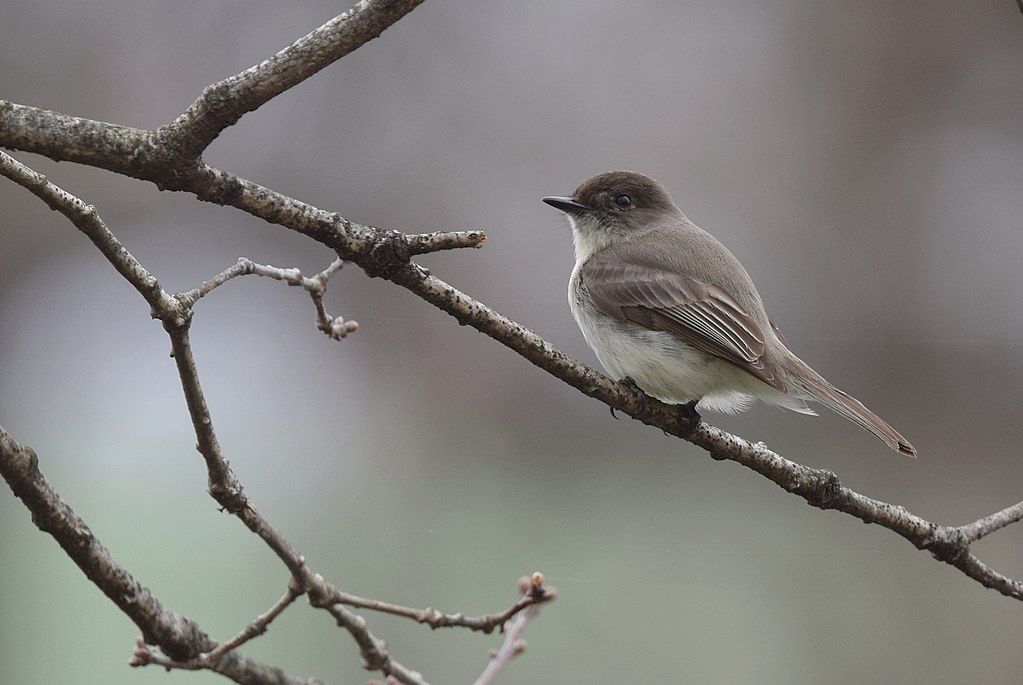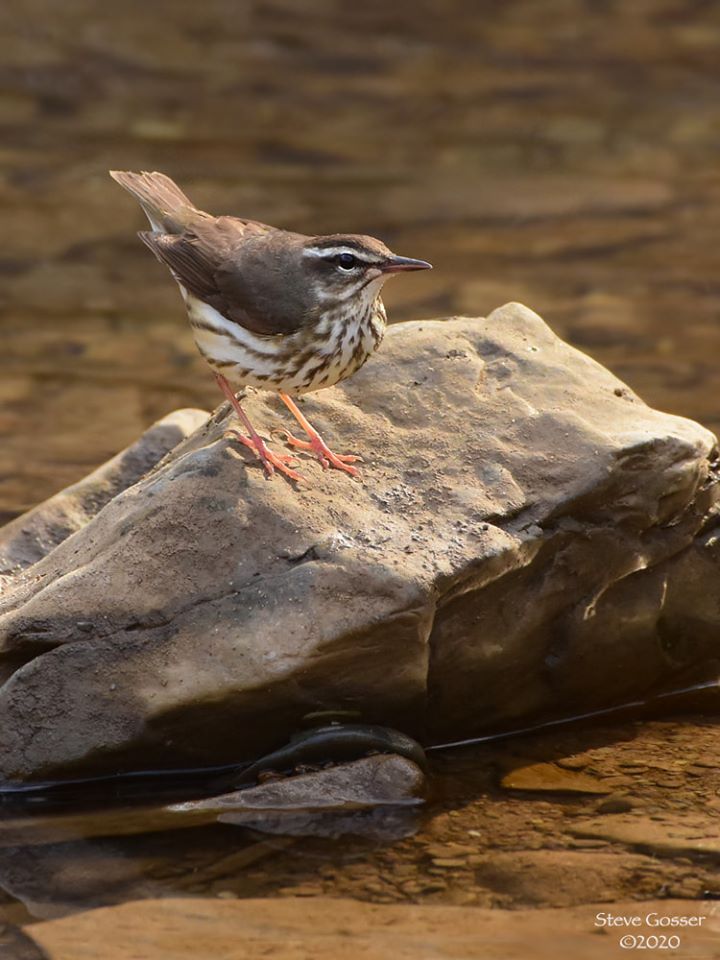
3 April 2023
On Saturday before the storms I saw my First Of Year eastern phoebes (Sayornis phoebe) in Schenley Park while Kathy Saunders found a first Louisiana waterthrush (Parkesia motacilla) at Tom’s Run Nature Reserve. Two tail-waggers are back in town.
Few birds wag their tails side to side but we do call it “wagging” when they bob or pump their tails up and down. Eastern phoebes are subtle about it but the movement is almost constant and it draws our attention.
What makes phoebes wag their tails faster? Predators! Sibley describes a 2011 study of black phoebes:
Avellis concludes that tail pumping is a signal meant to send a message to the predator. It tells the predator that the phoebe has seen it, and therefore the phoebe is not worth pursuing.
— Sibley Guides: Why Do Phoebes Pump Their Tails?
Louisiana waterthrushes don’t just wag their tails. They continuously bob the entire back end of their bodies by moving their ankle joints. Birds’ ankles are the backward “knees,” the middle joint on their legs, hidden by this waterthrush while he dips his butt.

His bobbing is like a habit he just can’t quit.
Louisiana waterthrushes have a different reason for tail wagging than eastern phoebes and they hold their technique in common with another April migrant, spotted sandpipers.
In case you missed it, here’s why they “wag” their tails.
(photo and video credits are in the captions)
FOS Towhee in my Beechview yard.